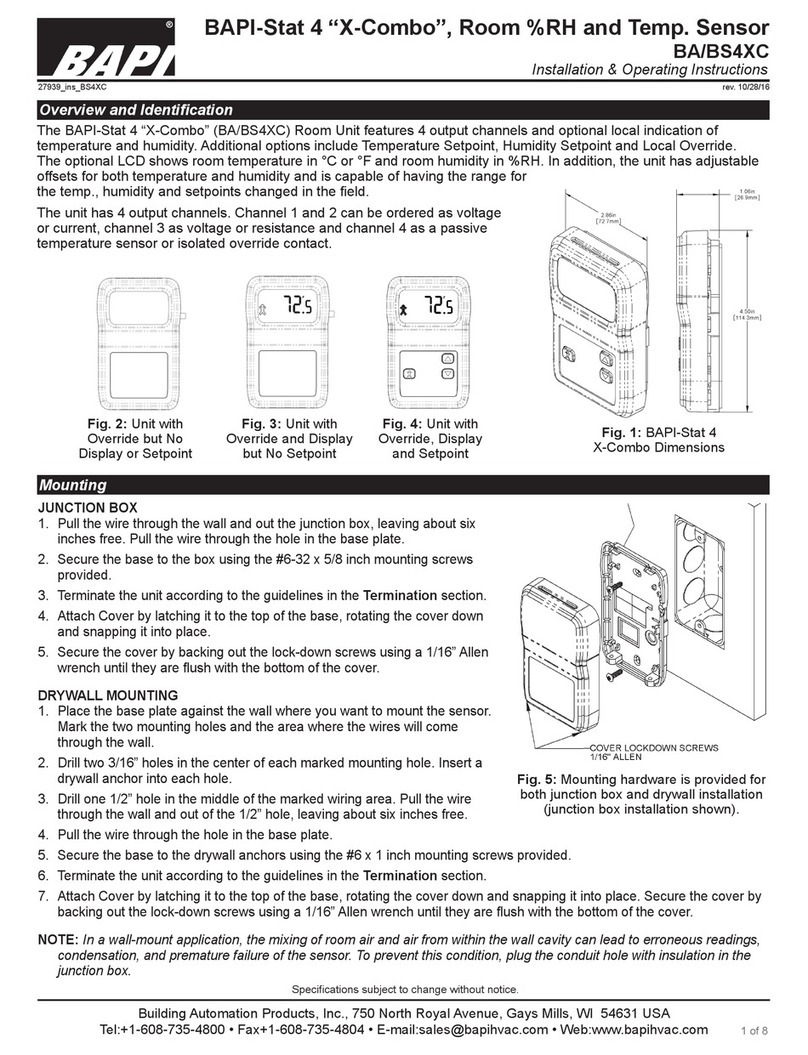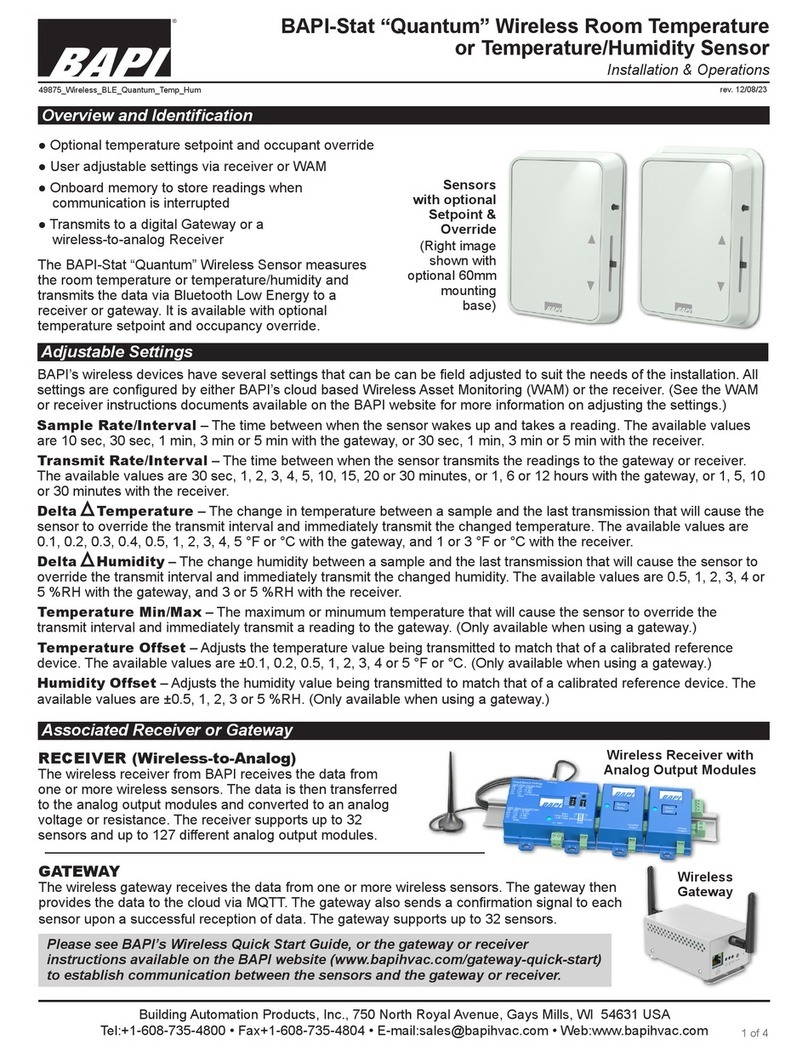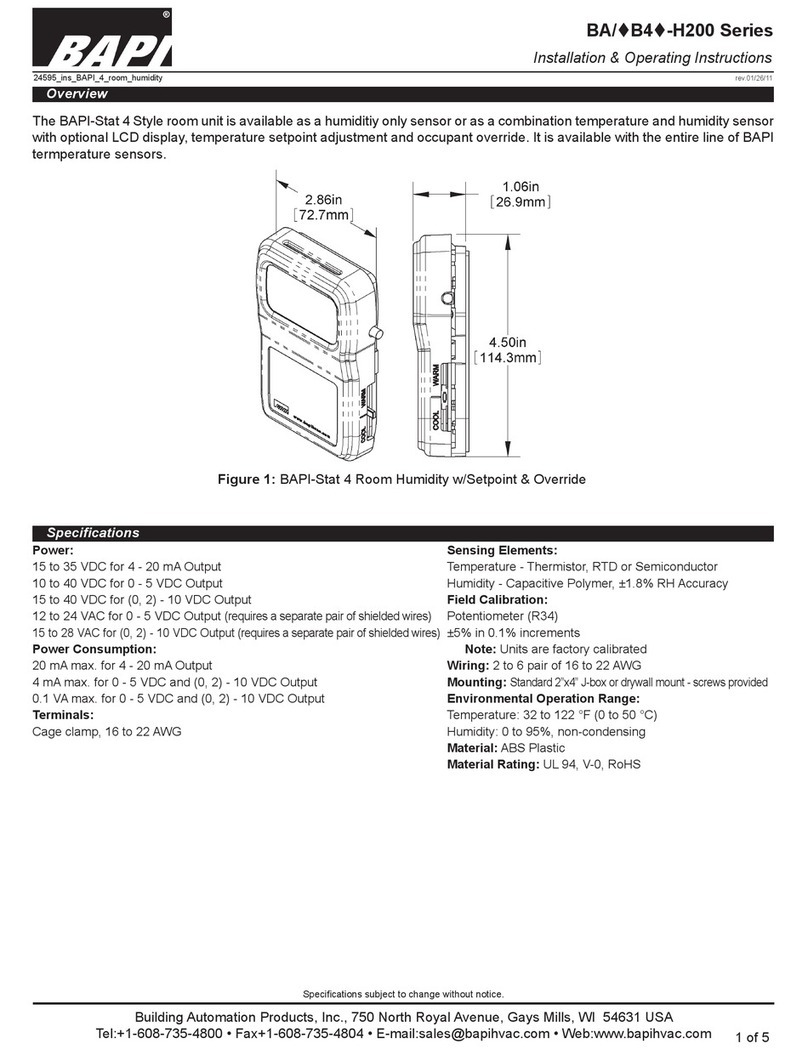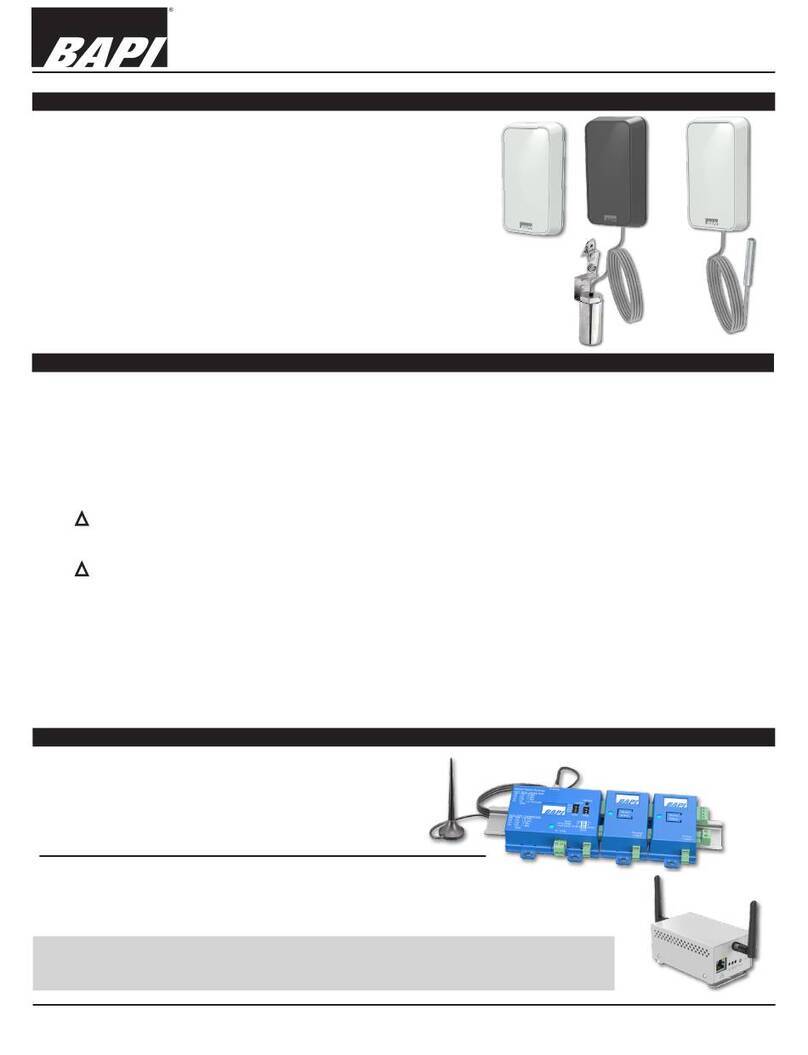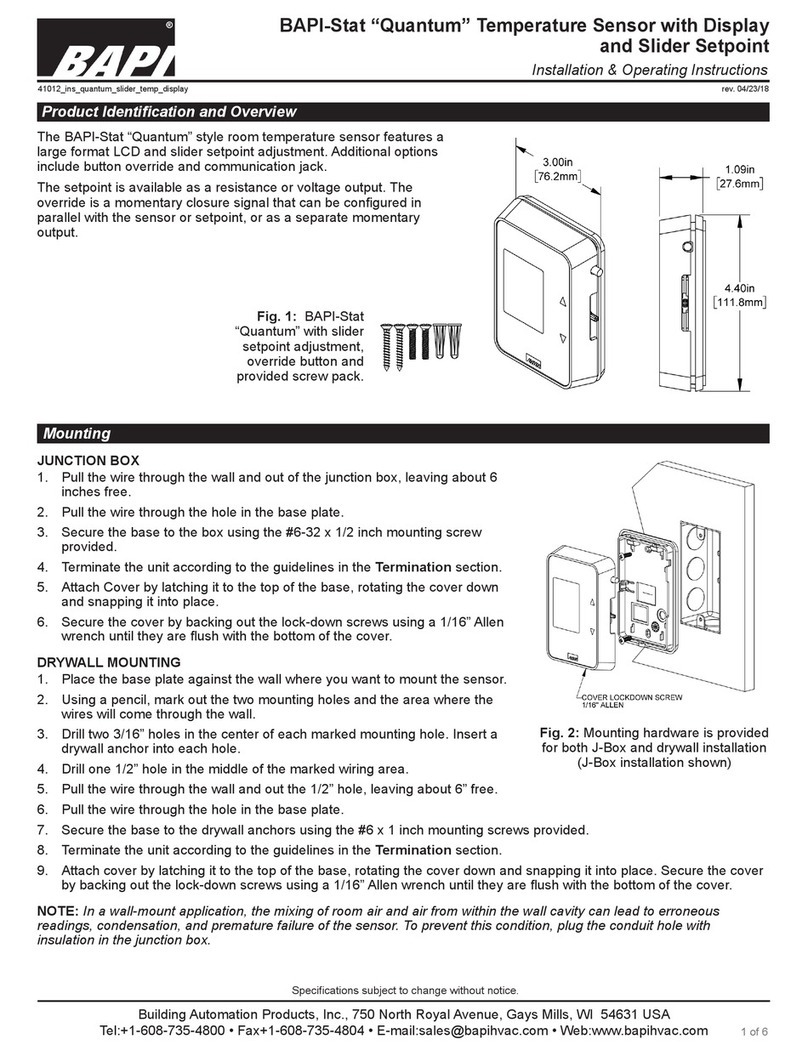
Installation & Operating Instructions
“BAPI-Stat 3” Room Sensor
Building Automation Products, Inc., 750 North Royal Avenue, Gays Mills, WI 54631 USA
T
el:+1-608-735-4800 • Fax+1-608-735-4804 • E-mail:
[email protected] • Web:www
.bapihvac.com
Specications subject to change without notice.
rev. 01/30/14
24694_ins_BS3
1 of 6
Overview and Identication
The BAPI-Stat 3 is a multiple output transmitter for temperature and
humidity with setpoint capability for both and occupied/unoccupied
override switching. The large easy-to-read display is ideal for cross
room viewing and membrane pushbuttons are designed for easy
operation and cleaning.
A fully featured unit can have 4 active channel outputs, override and
a passive sensor output. All ranges are factory set, however each
temperature and humidity sensor channel has a local offset adjust for
ne tuning. The display can be locally customized to the customer’s
preference.
Power Supply:
10 to 35 VDC (15 to 24 VDC Recommended) for 4 to 20 mA or 0 to 5 VDC Outputs
15 to 35 VDC (15 to 24 VDC Recommended) for 0 to 10 VDC Outputs
12 to 28 VAC (Requires a separate pair of shielded wires) for 0 to 5 VDC Outputs
15 to 28 VAC (Requires a separate pair of shielded wires) 0 to 10 VDC Output
Power Consumption:
60 mA maximum DC: 4 to 20 mA or 0 to 5 VDC Outputs
10 mA maximum DC: 0 to 10 VDC Output
1.44 VA maximum AC: 0 to 5 VDC Outputs
0.2 VA maximum AC: AC: 0 to 10 VDC Output
Outputs: 4 active output channels plus 1 passive temp. sensor
Volts 0 to 5 VDC or 0 to 10VDC, Imp. >10KΩ (CH 1, 2, 3, 4)
Current 0, 4-20 mA, Imp. <500 W @ 24 VDC (CH 1, 2)
Resistance E-POT, 1K, 10K, 50K or 100KΩ, 5 VDC @ 5 mA max (CH 3, 4) - Factory selected per application
Contact N.O. reed switch, 250 mA @ 29 V max
Temp. Sensor Passive RTD, thermistor or semi-conductor (CH 5)
Sensing Elements: Active output and display
Temperature 10K-2 Thermistor,
Humidity Capacitive Polymer, ±2%RH
Optional Passive Temperature Sensors:
Thermistor: Thermal resistor
Temp. Output Resistance, NTC
Accuracy (std) ±0.36ºF, (±0.2ºC)
RTD: Resistance Temperature Device
Temp. Output Resistance, PTC
PT Accuracy (std) 0.12% @Ref, or ±0.55ºF, (±0.3ºC)
Semiconductor: Solid State (AD592)
Temp. Output 2 wire, 1uA/ºC (0.556uA/ºF)
Accuracy Offset correction given to 0.1ºC (0.18ºF)
Mounting:
2” by 4” J-box or drywall mount - screws provided
Specications
Controls: (Buttons required for technician adjustments)
0, 3 or 5 wipe down buttons
(Conguration dependent)
Display: LCD multi-segment
Main 3.5 digit, 0.8” tall
Minor 2.5 digit, 0.25” tall
Other BAPI-Man, units
Ambient Specications:
Temperature: 32 to 122ºF (0 to 50ºC)
Humidity: 0 to 95%, non-condensing
Wiring:
2 to 5 pair of 16 to 22 AWG
(Conguration dependent)
Material: ABS Plastic
Material Rating: UL 94, V-0
Fig. 1:
BAPI-Stat 3 with temperature and humidity
setpoint and override. (Units without humidity
setpoint will only have three buttons.)






